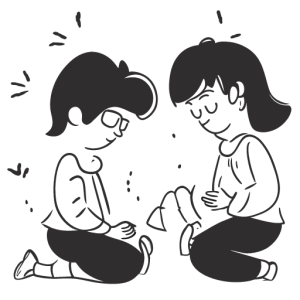Trauma leaves not only psychological scars but often a deep spiritual void. Islamic and Sufi psychology offer holistic pathways to heal these wounds by addressing the mind, heart, and soul together. Drawing on centuries-old wisdom and modern therapeutic techniques, this approach integrates faith, spirituality, and psychology to foster recovery and post-traumatic growth. In this article, we explore the theoretical foundations of Islamic and Sufi psychology in trauma healing, practical therapeutic approaches (both traditional and modern), historical insights, and case examples. We also discuss how mental health professionals apply these concepts today and how individuals can use them for personal healing.
Theoretical Foundations: An Islamic View of the Self and Suffering
Islamic psychology (often termed Ilm al-Nafs, “science of the soul”) posits a multi-dimensional view of the self encompassing body, mind, and spirit. Classical Muslim scholars emphasized that mental distress is as real as physical illness – and just as treatable. As early as the 9th century, the scholar Abu Zayd al-Balkhi wrote that emotional pain and physical pain are intertwined: “when the soul is afflicted (with psychological pain) the body will lose its natural ability to enjoy pleasure and life becomes distressed… psychological pain may lead to bodily illnesses.” He stressed that feeling sadness, anxiety, or anger is normal, not a sign of weak faith, comparing emotional upsets to common physical ailments. This holistic mind-body-soul perspective predates modern psychosomatic medicine by centuries and underscores a core Islamic principle: spiritual well-being, mental health, and physical health are deeply interconnected.
In Islamic theology, human beings are seen as endowed with an innate purity (fitrah) and a soul (ruh) breathed into them by God. Life’s hardships, including traumatic events, are understood as tests of faith and character – not as arbitrary suffering. The Qur’an reminds believers, “Do the people think they will be left to say: ‘We believe,’ and not be tried?” (Qur’an 29:2-3) – indicating that trials are part of the human journey. However, Islam also offers coping mechanisms rooted in faith: qualities like sabr (patience), tawakkul (trust in God’s plan), and dua (prayerful supplication) are encouraged responses to hardship. These spiritual practices provide meaning to pain and a sense of hope that hardships can expiate sins or elevate one’s spiritual rank. Importantly, Islamic teachings never reduce mental illness to a mere lack of faith. Instead, maintaining spiritual practices is seen as one layer of support for healing, alongside psychological and social supports.

Islamic psychology’s framework of the self also includes the concept of the nafs (self or ego) which has different states – from the unruly nafs al-ammara (commanding ego) to the peaceful nafs al-mutma’inna (soul at peace). Trauma can be viewed as a disturbance to the nafs and the heart (qalb), the spiritual heart that is the seat of emotion and faith. Healing, therefore, involves restoring balance to the nafs and cleansing the heart of the pain imprinted on it. Theoretical models developed by contemporary Islamic psychologists expand on these Quranic and classical concepts to create therapeutic paradigms. For example, psychologist Malik Badri (often called the father of modern Islamic psychology) argued for “Islamizing” psychology by integrating Islamic understandings of human nature with clinical practice, and scholars today continue to build frameworks that draw on prophetic wisdom for mental health. The goal is a psychology that not only alleviates symptoms but also nurtures spiritual growth and resilience through remembrance of God (dhikr) and alignment with one’s fitrah.
Sufi Psychology: Healing the Soul and Heart
Sufism – the Islamic mystical tradition – offers a deeply spiritual lens on psychology and trauma. At its core, Sufi psychology is about healing the “sickness of the soul,” which it identifies as the sense of separation from one’s true self and from God. Trauma is seen not just as a psychological wound but as an existential wound – a rupture in the person’s inner connection to the Source of Life. The cure, according to Sufi wisdom, lies in re-establishing that connection through spiritual practice. “Sufism is the way to healing the sickness of the soul, the alienation from one’s true being and from God that afflicts modern persons. That healing lies in connection with the Source of Life,” writes one psychiatrist, noting that Sufism offers a path to fundamental transformation, inner harmony, and tranquility beyond what conventional psychology alone can provide.
A central principle in Sufi psychology is that beneath the layers of pain, every human being’s innermost core remains pure and whole. Sufi teachings hold that each person is born with Divine Light illuminating the heart, an inner sanctum that cannot be permanently sullied by life’s traumas. In other words, no matter how deep the trauma, there is a place of untouched wholeness within – the ruh or spirit – that can be accessed and strengthened. Healing, then, becomes a journey of uncovering or remembering this pristine self that was never broken. “No matter how deep the trauma and how ingrained my psychological reactions are, that place of wholeness can’t be contaminated,” writes one survivor, reflecting Sufi teachings. “It is a place that through spiritual healing, I’m learning to contact and to live from.”
Sufi psychology also emphasizes self-knowledge as the key to healing. A saying attributed to Prophet Muhammad (and often quoted by Sufis) is, “He who knows himself, knows his Lord.” By deeply understanding one’s own emotions, fears, and desires, one peels away the false ego and rediscovers the Divine presence within. Modern Sufi practitioners describe psychological distress as arising from “lack of knowledge of who we truly are” and getting caught up in our life stories and wounds. The remedy is to go beyond the conditioned narratives of the past. Sufi psychology seeks to remind each individual that there is more to them than the aspects that are reactive to the environment. By going deeper into ourselves and tapping into the constant and stable part of our being, we are less likely to sway with life’s fluctuations. In practice, this means using spiritual disciplines to center oneself in the present, where God’s support is ever-available, rather than remaining hostage to the past trauma or future anxieties.
Sufi Perspectives on Pain and Transformation
Within Sufi literature, trauma and emotional pain are often reframed as opportunities for transformation. The 13th-century poet Jalaluddin Rumi – himself a renowned Sufi mystic – frequently wrote about suffering as a doorway to spiritual awakening. He famously suggested that “the wound is the place where the Light enters you.” In one of his poems, Rumi uses vivid metaphors to illustrate how hardship ultimately heals and refines us: “The spiritual path wrecks the body; but afterward restores it to health: it destroys the house to unearth the treasure, then with that treasure builds it better than before… The flesh is cut open to draw out the arrow — so that fresh skin might heal the wound.” In Sufi psychology, rather than seeing trauma as a meaningless catastrophe, it is seen as part of the soul’s journey – a catalyst that can “destroy” old, limited identities and lead to the emergence of a stronger, wiser self once healing occurs. This perspective doesn’t glorify suffering but gives it context and purpose, which can be deeply comforting to trauma survivors searching for meaning in their pain.
Crucially, Sufism provides not just philosophy but concrete practices for achieving this transformation. It offers what one scholar called “the way to meaning, the way to connection with the Source of Light,” rather than just an explanation. The ultimate aim is a state of inner unity and peace (itmi’nan) where the individual feels at peace with themselves and aligned with the Divine will – essentially the healed state of the soul. Achieving this involves purifying the ego (tazkiyat al-nafs) through remembrance of God, love, and service, gradually moving the self from turmoil to tranquility. Sufi psychology aligns closely with modern transpersonal psychology in its focus on transcending the ego, and with humanistic psychology in its emphasis on self-actualization and meaning. However, Sufism grounds these ideas in a theistic framework: healing and growth occur through God (often experienced as an intense love or longing for the Divine). In Sufi metaphors, God is the ultimate therapist – referred to as “the Healer” in the Qur’an – and the practices are aimed at opening oneself to His grace, which cleanses the heart and heals the broken spirit.

Historical Perspectives: Early Muslim Contributions to Mental Healing
Islam’s holistic view of psyche and spirit laid the groundwork for some of the earliest mental healthcare practices in history. Far from seeing mental illness as purely supernatural or a moral failing (a common view in medieval times elsewhere), Muslim physicians and scholars approached it with compassion and scientific curiosity. Notably, the Islamic world pioneered the establishment of psychiatric hospitals and wards, hundreds of years before such facilities existed in Europe. The Persian physician Abu Bakr al-Razi (Rhazes), a 10th-century polymath, is credited with founding the first psychiatric ward in Baghdad, where he advocated medical treatment and care for those with mental distress. Under the Abbasid Caliphate, hospitals (bimaristans) in cities like Baghdad, Cairo, and Damascus had dedicated sections for mental health treatment by the 9th century. Patients received humane care, including baths, diet, music therapy, and talk therapy – a remarkable humanitarian achievement for its era. These historical facts dispel the notion that mental health is a “modern” concern; in fact, Islamic civilization recognized and treated mental suffering as part of healthcare over a millennium ago.
Muslim scholars also wrote extensive texts on what we today call psychology. In the 9th century, Al-Balkhi authored Masalih al-Abdan wa al-Anfus (“Sustenance for Body and Soul”), which many consider an early psychology manual. He described symptoms of conditions akin to depression and anxiety, and importantly, proposed cognitive and behavioral techniques to manage them. Al-Balkhi advised patients to proactively counteract negative thoughts by “generating positive thoughts within the soul” as a form of “psychological first-aid” when distressed. He observed that many fears are irrational and can be overcome by logical thinking – essentially an antecedent to cognitive-behavioural therapy. In fact, his method of replacing negative thoughts with realistic positive ones foreshadowed what we now call cognitive restructuring: he found that the things people were fearful of were not really harmful if thought through logically; his method was to replace the negative thoughts with positive ones, letting clients realize their initial thoughts were false. This led one historian to dub Al-Balkhi a “pioneer of cognitive therapy.” Crucially, Al-Balkhi integrated faith into his treatment, reminding clients of spiritual truths to reframe their mindset. For example, he would gently remind a despairing person that this world is “not a place of pure joy” nor where one can have everything they desire – an Islamic concept that helped alleviate emotional disorders by nurturing acceptance and patience.
Likewise, medieval scholars like Imam Al-Ghazali wrote about “diseases of the heart” (such as anger, envy, pride) and their cures, blending moral psychology with spiritual practice. Poets like Rumi and Hafiz used poetry as a medium of healing, offering comfort and new perspectives to those in pain. The Sufi saint Rabia al-Adawiyya demonstrated how intense love of God can heal the wounds of abuse (in her case, overcoming a traumatic early life of enslavement). These historical figures are sometimes seen as early psychotherapists in their own right, even if they didn’t use that word. They provided counseling, spiritual direction, and interventions (from simple listening and empathy to prescribing specific remembrances or prayers) to help people overcome grief, trauma, and spiritual crises.
In summary, the Islamic tradition – both its scientific-medical branch and its spiritual-mystical branch – has a rich legacy of addressing psychological trauma and distress. This legacy is increasingly being studied and reclaimed in the Muslim world and beyond. Understanding this history instills pride and confidence in Muslim clients that approaches grounded in their faith are not new or untested, but rather stand on the shoulders of giants. It also encourages today’s mental health professionals to draw from this well of wisdom in creating culturally sensitive and spiritually informed healing modalities.
Integrating Islamic Principles in Modern Psychotherapy
Modern mental health professionals are finding innovative ways to incorporate Islamic teachings and practices into evidence-based psychotherapy for trauma. This integration aims to make therapy more culturally relevant for Muslim clients and to leverage the power of faith as a healing resource. One example is the development of trauma interventions that weave together Quranic narratives with cognitive-behavioral techniques. In a Somali-American community in the U.S., psychologists created an “Islamic Trauma Healing” group program that combines standard trauma-focused CBT with Islamic spirituality. Over six sessions, participants learn about trauma and coping while engaging with Islamic stories and rituals. For instance, facilitators share narratives of Prophets who endured great hardships – such as Prophet Ayyub (Job), who lost his health and family but remained patient – to illustrate resilience and faith during trials. These prophetic stories provide role models for coping, helping survivors reframe their own trauma as part of a greater purpose or test. The program also incorporates regular prayer and dua (supplication) into the therapeutic process: group members spend time turning to Allah in private prayer as they recall trauma memories, effectively blending exposure therapy with spiritual comfort. Themes of the workshop arc from suffering to healing to personal growth, mirroring the Islamic belief in transformative hardship. Early pilot data showed reduced trauma symptoms, and because the groups are lay-led and mosque-based, this model has proved scalable and empowering to the community.

Another area of integration is using cognitive therapy techniques aligned with Islamic cognitive reframing. Cognitive-behavioral therapy (CBT) aims to identify and challenge distorted thinking that sustains trauma-related conditions like PTSD and depression. Muslim therapists often find Quranic parallels to these methods. A striking example is how God addresses the Prophet Muhammad in the Quranic chapter Surah ad-Duha. When the Prophet felt distressed and worried that God had “forsaken” him after a pause in revelation, Allah revealed verses to reassure him: “Did He not find you an orphan and give you refuge? And He found you lost and guided you. And He found you poor and made you self-sufficient.” (93:6-8). In essence, the Quran has Allah remind the Prophet of positive facts from his past to counter his negative thoughts. This is remarkably similar to cognitive therapy’s approach of replacing negative cognitions with evidence of one’s blessings or strengths. Therapists cite this example to clients: just as Allah reframed the Prophet’s perspective by highlighting past help and future promise (a divine example of cognitive restructuring), they too can learn to reframe their trauma narrative. The integration of scripture in therapy can thus validate therapeutic techniques through a spiritual lens, increasing a client’s trust in the process. As one article noted, the Quran itself uses a cognitive approach with the Prophet, illustrating that thinking and reflecting on positives is an important part of healing.
Islamically integrated psychotherapy often modifies standard techniques to include spiritual practices. For example, a Muslim therapist guiding a client through relaxation training or mindfulness might incorporate dhikr (rhythmic repetition of God’s names) as the focus of concentration. This serves the dual purpose of calming the nervous system and spiritually grounding the person. Some clinicians assign journaling exercises but frame them as forms of muhasabah (self-reflection and accounting of one’s soul) which is a Sunnah practice. Imagery-based therapies can be adapted to have clients visualize Islamic scenes (like being in a safe place such as the Grand Mosque in Mecca, or imagining Allah’s light healing their heart). Such adaptations harness the client’s existing spiritual schema to enhance the therapeutic effect.
Moreover, many Muslim clients derive comfort from prayer (salah), and therapists encourage using the ritual of the five daily prayers as anchors in the day for stability and as times to mindfully release stress to God. Clinicians might check in: “How is your khushu (focus) in prayer going?” not in a judgmental way, but to help the client use prayer as a coping skill rather than abandon it due to depression or trauma (which sometimes happens when one feels despair). Reading or listening to Qur’an can also be therapeutic; mental health providers might suggest certain passages known to uplift (for example, Surah Al-Inshirah which speaks of ease coming after hardship). In essence, contemporary Islamic psychology borrows tools from Western therapy schools – CBT, mindfulness, narrative therapy, etc. – and infuses them with Islamic content and spiritual meaning. This enhances engagement and efficacy for believers. It also respects the client’s worldview, which is a key aspect of culturally competent therapy. Increasingly, training programs and workshops exist (in North America, the UK, Southeast Asia, and elsewhere) to equip counselors with these integrative skills, and organizations like the International Association of Islamic Psychology and the Khalil Center specialize in this approach.
Sufi Spiritual Practices in Trauma Healing
Many of the above Islamic interventions overlap with Sufi practices, since Sufism is essentially the inner, experiential dimension of Islam. However, Sufism also brings additional therapeutic tools, particularly in the realm of experiential healing and altered states of consciousness for trauma release. One hallmark is dhikr (remembrance of God) done in a group setting. In Sufi gatherings, individuals come together to chant God’s names or sacred phrases, often in a rhythmic, musical fashion. This practice can induce a state of calm or even ecstasy that helps participants process emotional pain in a supportive environment. For trauma survivors who feel isolated in their suffering, joining a dhikr circle provides community, a sense of belonging, and the powerful emotional resonance of group spirituality. The repetitive chanting and synchronized breathing act as a form of guided meditation, similar to techniques known to reduce PTSD symptoms (like mantra meditation). Sufi masters have long taught that “Allah’s remembrance is healing,” quieting the ego and washing away worldly fears from the heart. From a psychological perspective, dhikr can downregulate the overactive fight-or-flight response by engaging the parasympathetic nervous system (through slow, deep breathing and the soothing effect of rhythmic sound).
Another powerful Sufi practice for healing is Muraqabah, often translated as meditation or contemplation. This involves sitting quietly, focusing one’s heart on God, and observing one’s inner experiences without attachment – very akin to mindfulness. The difference is that in Sufi muraqabah, the intention is to witness the play of one’s thoughts and emotions before God, often invoking a sense of being held in a divine presence. For someone with trauma, this practice can create a safe inner space where painful memories or feelings can surface and be gently released under the gaze of compassion (as opposed to re-living them with terror). Sufi healers may guide a traumatized person to visualize the “Divine Light” entering their heart with each in-breath, and expelling darkness or pain with each out-breath. This kind of guided imagery, grounded in spiritual symbolism, can be very effective. In fact, it’s not unlike modern therapies that use visualization for inner child healing or somatic release, but Sufism provides a transcendent focal point (the Light of God) which many find profoundly comforting.
Breathwork is another domain where Sufi tradition and modern trauma therapy intersect. Some Sufi orders teach specific breathing patterns (sometimes coordinated with phrases like “Allah” or “La ilaha illa Allah”) to regulate the life force energy. Conscious breathing techniques help in grounding and managing anxiety, something trauma survivors greatly benefit from. An illustrative case comes from a writer who used Sufi breath meditation in her trauma recovery. At the start of therapy sessions, when she would feel too tense to speak, her therapist had her do a 20-minute breathing exercise. She sat in a relaxed posture, closed her eyes, and focused on slow breaths. As she did so, she “instinctively started silently reciting a zikr”: with each exhalation saying “La ilaha” (There is no god…) letting go of all her stress, and with each inhalation “illa Allah” (…except God, the Divine Reality) drawing in a sense of peace. After about 15 minutes of this practice, she noticed the tightness in her chest had loosened and her breath, which had been shallow, became deep and calm. “An air of wholeness” came into her inner world, and the fragmented parts of her felt “more integrated,” she reported. This is a beautiful example of how Sufi dhikr combined with breathwork can directly alleviate the somatic grip of trauma and foster integration of the self. Over time, she began doing this practice daily on her own – “breathing into my wounds,” as she described it – bringing compassion to the hurt parts of herself and cultivating inner trust. Such personal experiences echo what Sufis have long taught: that “the heart that remembers God is the heart that finds rest,” even after turmoil.

Sufi traditions also emphasize practices like forgiveness and love as therapeutic acts. Holding onto anger and vengefulness is seen as a burden on the soul that perpetuates inner turmoil (modern psychology similarly links unresolved anger or grudge-holding to prolonged trauma symptoms). Through guided spiritual counsel, Sufi-oriented healers help individuals gently move toward forgiving those who harmed them – not as condoning of the wrongdoing, but as a way of freeing their own hearts from the poison of hate. In Sufi lore, forgiving others and oneself creates space in the heart for Divine love to enter, which is the true balm. This resonates with contemporary trauma therapies that incorporate forgiveness interventions to achieve closure. Likewise, cultivating gratitude (shukr) even amidst pain is a Sufi practice that aligns with positive psychology techniques for trauma (like keeping a gratitude journal to shift focus away from what was lost, toward what still remains or what was learned).
It’s worth noting that Sufi psychology doesn’t shy away from conventional treatment – many Sufi-minded therapists are also trained in clinical psychology and use standard methods. The distinction is that they always seek to address the spiritual dimension of the person’s healing, believing as Sufi Master Hasan al-Basri said, “a disease of the heart can’t be cured by the medicine of the body.” Both dimensions must be treated. In practice, a Muslim trauma survivor might see a psychotherapist for EMDR or talk therapy, and also visit a Sufi teacher or spiritually-integrated counselor for parallel guidance through dhikr, Quranic reflection, and moral support. This two-pronged approach can be very effective, as the modalities reinforce each other. Indeed, Western research now recognizes that incorporating a patient’s religion/spirituality often improves outcomes in trauma therapy. Many Muslims, when stressed or traumatized, “traditionally rely on Islamic principles and teachings, as well as their community, to cope with and address trauma-related distress.” Rather than reinvent the wheel, therapists are tapping into those natural coping mechanisms, providing a culturally congruent path to recovery.
Cultural Adaptations of Sufi Practices Across the Muslim World
While the core principles of Islamic and Sufi psychology remain consistent—centered on remembrance of God (dhikr), cultivation of the heart (qalb), and purification of the ego (tazkiyat al-nafs)—the specific expressions of these practices vary notably across different cultural contexts. Such regional adaptations can play a significant role in trauma healing, as they reflect local customs, languages, and communal rituals that resonate more deeply with people’s lived experiences.
- Southeast Asia (e.g., Indonesia and Malaysia):
In countries like Indonesia, which has the largest Muslim population in the world, Sufi practices are woven into community life through popular gatherings called majelis taklim (religious study circles) and zikir (remembrance) assemblies. Certain orders such as the Qadiriyya wa Naqshbandiyya have developed culturally specific forms of collective dhikr, sometimes accompanied by local musical instruments or chanting in the Malay or Indonesian languages. In trauma contexts—especially for survivors of natural disasters like tsunamis—these community-based zikir events foster emotional solidarity and hope. People chant together, often swaying gently in unison, helping individuals feel less isolated in their grief and more connected to a supportive spiritual collective. - Sub-Saharan Africa (e.g., Senegal, Sudan, and Nigeria):
Sufi orders like the Tijaniyya and Muridiyya in West Africa emphasize communal gatherings, known as hadra or dhikr sessions, sometimes accompanied by drumming or distinctive rhythms that reflect local musical traditions. In Senegal, Grand Magal (a large pilgrimage event of the Muridiyya order) or smaller zawiya gatherings can be potent communal healing spaces, where spiritual chants and praise poetry of the Prophet (peace be upon him) allow participants to release emotional burdens in a celebratory atmosphere of faith. For trauma survivors—be it from political conflict or personal adversity—being part of these large, uplifting events can shift feelings of despair into shared spiritual resilience. - North Africa (e.g., Morocco, Algeria, Egypt):
Sufi brotherhoods such as the Shadhiliyya or the Boutchichiyya often integrate local cultural elements like call-and-response chants, Sufi poetry recitals, or spiritual songs (madih) to evoke a sense of divine presence. Individuals processing trauma may find relief in the hypnotic quality of repeated dhikr phrases, coupled with rhythmic handclapping or simple percussion. Therapists working in these regions sometimes recommend that clients attend local Sufi gatherings as a form of social and spiritual therapy—a chance to connect deeply with God and with others. - Middle East (e.g., Turkey):
The Mevlevi order, famed for the whirling sema ceremony, is known for how it combines music, poetry (especially Rumi’s verses), and the meditative dance known as whirling. For those affected by trauma, guided whirling can be a powerful somatic release, aligning the body with a centered spiritual axis—much like certain body-focused therapies in modern psychology. In a therapeutic context, novices may start with short, supervised sessions of gentle whirling, accompanied by spiritual music, as a way to process emotional pain through mindful movement.
In each of these regions, the key insight is that Sufi practices are not monolithic. They adapt organically to local cultures, languages, and communal rhythms, which can deepen their healing impact. Where group-based chanting with drums might be commonplace in West Africa, quieter forms of remembrance and meditation might be the norm in parts of Southeast Asia. Therapists who are culturally informed can suggest or adapt these regional Sufi practices to the client’s background, increasing the sense of safety and familiarity—a critical element in trauma recovery. Furthermore, such adaptations can help sustain dhikr or other spiritual practices beyond the therapy setting, as they align with the client’s everyday cultural and religious life.
Case Studies and Personal Experiences
Abstract discussions become tangible when we consider real-life examples of trauma healing through Islamic and Sufi psychology. One compelling case is that of Daliah Merzaban, who has written about her journey recovering from complex trauma by embracing Sufi spiritual practices. Merzaban had endured sustained emotional wounds from childhood, leading to what psychologists identify as Complex PTSD. When she finally began addressing these wounds in adulthood, she found traditional talk therapy helpful but not sufficient – she needed something that reached the deepest layers of her being where the pain resided. That’s when she turned to Sufi-inspired methods. As mentioned earlier, one of her breakthrough moments in therapy came when she integrated dhikr with deep breathing at the start of her sessions. By reciting La ilaha illa Allah in rhythm with her breath, she effectively combined mindfulness, controlled breathing, and spiritual affirmation, which calmed her hyper-aroused nervous system. She describes how over weeks of practice, this technique allowed her younger, traumatized self (the “inner child” stuck in fear) to feel seen and soothed. “I find myself leaning on this intrinsic healing power of breath in response to daily stresses,” she notes, demonstrating how a practice rooted in Sufi tradition became an ongoing personal coping tool.
Beyond the therapy room, Merzaban also incorporated daily meditation and remembrance of God on her own. Each morning, she would sit with her misbaha (prayer beads) and consciously “breathe into my wounds,” bringing to mind the hurt parts of herself and enveloping them in compassionate remembrance. If tears came, she let them flow in the safe space of communion with God, rather than fighting them. Over time, she experienced a growing inner calm and trust. Importantly, she didn’t do this in isolation – she was connected to a Sufi community (the Mevlevi order, inspired by Rumi) which provided guidance and collective dhikr gatherings. That sense of belonging and spiritual friendship (known as suhba in Sufism) was vital in her feeling supported and not alone in her struggle. Her case exemplifies how blending professional therapy with personal spiritual practice can yield powerful healing synergy. The therapy provided her with validation, psychoeducation about trauma, and a skilled human witness to her pain, while the Sufi practices gave her a direct channel to the Divine witness and healer.

In clinical settings, therapists have shared anonymized stories of clients who made significant strides by integrating their faith. For instance, a psychologist recounts treating a refugee mother who had survived war trauma and loss. She was plagued by nightmares and guilt. Along with standard trauma therapy (narrative exposure), the clinician encouraged the client’s religious coping: she began listening to her favorite Quran recitations each night before sleep and would recite a protective verse (Ayat al-Kursi) to calm herself. This ritual reduced her nightmares markedly. In sessions, when processing guilt over having survived while others perished, the therapist gently invoked Islamic beliefs about fate (qadar) – that life and death are ultimately in God’s hands. The client embraced this, finding comfort that it was not her fault she lived; it was God’s will and perhaps part of His plan for her to care for her remaining family. This spiritual reframing, alongside the therapist’s validation of her grief, helped alleviate her survivor’s guilt and allowed her to grieve in a healthier way without self-blame.
Another case involved a young man who had left his conflict-ridden home country and suffered from panic attacks and depression. He felt unmoored, purposeless, and was abusing alcohol to cope. Upon reconnecting with his faith through counseling, he started attending Friday prayers at a mosque and meeting with a mentor there. The sense of structure (daily prayers, community support) and the rediscovery of hope through religious meaning significantly improved his mental state. His therapist noticed that as he re-engaged with spiritual practices, his compliance with therapy homework (like thought journaling and gradually facing avoided situations) also improved – he had regained a will to live and heal, fueled by hope that God had better things in store for him. Essentially, reawakening his spirit pulled him out of the nihilism that trauma had sunk him into.
On the community level, the Somali “Islamic Trauma Healing” group mentioned before can be seen as a case study in culturally adapted care. Participants, many of whom were refugees with war trauma, reported that hearing stories of the Prophet and his companions suffering and yet trusting God deeply moved them – it reduced their sense of isolation and shame. One participant said that knowing even Prophet Muhammad went through periods of great stress (like the Year of Sorrow when he lost his wife and uncle) and still found solace in prayer inspired her to do the same. Group members learned specific du’as (supplications) from the Prophetic tradition for anxiety and sadness, reciting them together. According to the program’s pilot results, attendees showed decreases in PTSD symptoms and increased measures of post-traumatic growth. They attributed this not only to the CBT techniques but also to the barakah (blessing) of doing it in an Islamic way – it felt “healing for the soul and the mind at once.”
These examples underscore a key insight: trauma healing in an Islamic framework addresses both the human and the spiritual aspects of suffering. The cognitive, emotional, and physiological work of recovery is still essential – there are no shortcuts. But when a person’s faith is engaged as a healing agent, it can accelerate and deepen the recovery. They draw strength from feeling that God is with them (“inna Allaha ma’ana” – “indeed God is with us” Qur’an 9:40), and that their pain has meaning and can even be a pathway to closeness with the Divine. This instills hope, which is perhaps the most crucial ingredient in healing trauma.
Personal Applications for Individual Healing
One doesn’t need to be in formal therapy to benefit from these principles. Individuals can integrate Islamic and Sufi practices into their daily lives as a form of self-healing and emotional maintenance. Here are some practical ways to do so:
- Daily Dhikr and Meditation: Setting aside time each day for quiet remembrance can be profoundly healing. This could be as simple as spending 10 minutes in the morning after fajr (dawn prayer) breathing slowly and repeating a calming phrase like “SubhanAllah” (Glory be to God) or “Hasbi Allah” (God is sufficient for me). As you do this, allow any hurt or worry to surface, and imagine releasing it into God’s care with each exhale. This practice, much like mindfulness meditation, trains your nervous system to find calm, but also reassures your soul that you are not alone – a Higher Power is looking after you. Over time, many people find that this daily centering reduces their anxiety baseline and increases resilience to stress.
- Qur’an Reflection (Tadabbur): The Qur’an is considered a source of healing (“shifa”). Reading or listening to verses that relate to your struggle can offer comfort and guidance. If you’ve experienced trauma, certain passages about patience, trust, and God’s mercy may speak to you. For example, reflecting on the story of Prophet Yusuf (Joseph), who suffered betrayal and years of imprisonment yet forgave his brothers and rose to a high rank, can inspire forgiveness and hope. Try journaling after reading a passage: how does it apply to your situation? What might God be telling you through these words? This kind of reflective exercise can shift your perspective from victimhood to seeing yourself as part of a larger story of meaning and growth.
- Prayer and Supplication: Engage your prayers with intention for healing. In sujood (prostration), where a Muslim is closest to God, pour out your heart – this is a safe space to cry and express what hurts while asking for relief. Many people struggling with trauma find the pre-dawn optional prayer (Tahajjud) especially therapeutic; the stillness of the early morning and the act of sacrificing sleep to seek God’s help imbue one with peace. Additionally, Islamic tradition offers specific supplications for distress. For instance, the Prophet taught a dua for anxiety: “O Allah, I seek refuge in You from anxiety and grief, and I seek refuge in You from incapacity and laziness…” Memorizing and reciting such supplications whenever you feel a wave of panic or sadness can interrupt the cycle of negativity and invoke a sense of being spiritually shielded. It’s a way of doing “self-talk” but in the language of prayer, replacing “I can’t handle this” with “With Allah’s help, I will get through this.”
- Community and Service: Trauma often drives people into isolation, which unfortunately can worsen mental health. Islam places great emphasis on community – there is healing in simply being with righteous, compassionate companions. Attending gatherings at the mosque, weekend Islamic classes, or Sufi study circles can slowly rebuild one’s trust in people and provide a support network. Service to others is another medicine: volunteering (even while you are still healing) can restore a sense of purpose and self-worth. Whether it’s helping distribute food at a charity or simply listening to someone else’s problems, serving diverts focus from one’s own pain and can be empowering (“I still have something to give”). Sufi tradition in particular encourages khidma (service) as a way to heal egocentric thoughts – when done with the intention of pleasing God, it fills the heart with light. Many individuals have found that as they help others, their own trauma begins to feel more manageable and integrated.
- Creative Expression with Spirituality: Muslims have a rich heritage of expressing faith through art – calligraphy, poetry, nasheeds (spiritual songs), etc. Embracing creativity can be therapeutic for trauma. Write poetry or songs about what you’ve been through, infusing them with your beliefs and hopes. Even if you’re not a “writer,” the act of putting feelings into words addressed to God (as if writing a letter to God) can be cathartic. Some find solace in Quranic calligraphy – writing a verse that gives them strength in beautiful script and placing it where they can see daily, as a reminder. These creative outlets function similarly to art therapy, but with the added solace of dhikr or dua embedded in them.

Of course, using these personal practices does not mean one should avoid seeking professional help. Therapy and medication, when needed, are also tools provided by God’s grace – Islam encourages seeking cures. The ideal approach is often to combine both: utilize the spiritual tools consistently, and avail the psychological or psychiatric treatments as required. In fact, doing the former can enhance the latter. A person who prays for their own healing and actively engages in dhikr will likely have a more hopeful outlook, which makes therapy more effective. Conversely, as therapy progresses and one gains emotional skills, it can deepen one’s understanding of spiritual teachings (as mental clutter clears, one can grasp subtler meanings in scripture).
The Contemporary Revival of Islamic Psychology
In recent years, there has been a blossoming intersection between Islamic wisdom and modern psychotherapy, sometimes dubbed the “Islamic psychology movement.” Muslim mental health professionals around the globe are researching, writing, and teaching about how classical Islamic concepts of the soul and psyche can contribute to contemporary psychology. Academic journals now publish articles on topics like the Quranic theory of personality, Islamic approaches to cognitive therapy, and the efficacy of faith-based interventions for Muslim trauma survivors. Conferences and organizations (from the Association of Muslim Mental Health to the International Congress on Islam & Psychology) have emerged, creating platforms for dialogue between scholars of Islam, psychologists, and neuroscientists. This has led to more refined therapeutic frameworks that clinicians can use. For example, some have proposed models of psychotherapy stages based on the levels of the nafs, where treatment strategies are tailored to whether a client is in a state of ego-dominance (nafs ammara), internal conflict (nafs lawamma), or beginning to find peace (nafs mutma’inna). Rather than reinventing Western theories, these practitioners look to figures like Al-Balkhi, Al-Ghazali, and Ibn Arabi for inspiration, translating their insights into modern clinical practice.
Contemporary Islamic psychology doesn’t exist in isolation; it actively converses with modern theories. Trauma-informed care, for instance, has gained a spiritual dimension in Muslim contexts – understanding not just how trauma affects the brain and body, but also the heart and soul. Concepts like Post-Traumatic Growth (PTG), which indicate how adversity can lead to positive personal change, find a natural resonance with Islamic concepts of trials leading to spiritual elevation. Therapists might frame PTG to a Muslim client as “perhaps this is a means for you to attain a higher level of Jannah (Paradise) or closeness to Allah, as He promised to test those He loves.” Such framing must be done sensitively (never to invalidate the pain, but to offer hope of meaning). Interestingly, research shows that higher levels of religious commitment and belief can facilitate post-traumatic growth – a finding that validates why integrating faith is not only culturally appropriate but therapeutically wise.
On the other hand, Islamic psychology also carefully distinguishes healthy spirituality from unhealthy religiosity. Trauma can sometimes distort one’s religious outlook – for example, a person might develop excessive guilt, scrupulosity (waswasa), or fatalism (“God is punishing me,” “there’s no point in trying, everything is fate”). Islamic-oriented therapists work to correct these cognitions through proper theological understanding. They draw on mainstream Islamic teachings that God is Merciful and does not burden a soul beyond what it can bear (Qur’an 2:286). By reinforcing that suffering is not a sign of divine wrath or personal failure, they help the client rebuild a positive relationship with God post-trauma. In essence, contemporary Islamic psychology aims to prevent spiritual trauma (damage to one’s faith or image of God) from compounding psychological trauma. This is an area where collaboration between imams and therapists is growing – mosques and community centers in some places now host support groups facilitated jointly by religious scholars and psychologists, creating a holistic healing space.
Finally, it’s worth noting the appeal of Sufi practices beyond Muslim communities. Sufi psychology, with its universal themes of love, presence, and unity, has found enthusiasts among non-Muslim therapists and clients as well. Practices like breathing with La ilaha illa Allah or whirling meditation have been adapted in some trauma therapy circles (in a secularized form or with the client’s own spiritual interpretation) as innovative ways to release emotional blocks. This cross-pollination is reminiscent of how mindfulness from Buddhist tradition was integrated into Western therapy decades ago. We may be witnessing a similar integration of Sufi mindfulness and heart-based practices into the mainstream, as part of the broader movement toward integrative health that values spiritual well-being alongside mental health.
A Holistic Path to Healing
Islamic and Sufi psychology teach us that healing from trauma is not just about forgetting a painful event – it’s about transforming through it. By engaging the spiritual dimension, survivors can find meaning in their suffering, draw strength from their faith, and reconnect to a sense of purpose and self that trauma may have shattered. The theoretical foundations laid by Islamic teachings and Sufi wisdom offer a framework where trauma is seen as a challenge to be met with sabr (patience), tawakkul (trust in God), and azm (perseverance). The practical techniques – from prayer, dhikr, and meditation to cognitive reframing with Quranic insights – provide concrete ways to soothe the mind and heal the heart. Historical precedents assure us that Muslims have successfully walked this path of holistic healing for centuries, and contemporary mental health professionals are now validating and refining these methods in light of modern science.
For individuals seeking healing, the integration of these practices can be life-changing. It empowers one to become an active participant in their own recovery, employing not only therapeutic skills but also the power of belief, ritual, and spiritual community. A person moves from feeling broken and helpless to feeling supported by God and a higher purpose – and there are few things more healing than hope and connection. As one trauma survivor put it, “Healing will make space for revitalizing your relationship with Allah, and regaining a sense of control over your emotions… Through healing, we can regain the parts of ourselves that were lost and allow ourselves to be whole once again.”

In the end, the intersection of Islamic, Sufi, and modern psychological perspectives offers a compassionate, comprehensive approach to trauma. It recognizes that true recovery is not just the absence of PTSD symptoms, but the revival of the soul’s wholeness and the restoration of inner peace. This holistic healing journey – blending therapy with spirituality – holds promise not only for Muslim communities but for anyone seeking to heal in a way that honors both the human psyche and the yearning of the spirit.
References:
- Al-Balkhi, A. (9th c.). Masalih al-Abdan wa al-Anfus (Sustenance of Body and Soul) – as discussed in muslim.sg
MuslimSG Editorial. “Abu Zayd Al-Balkhi: A 9th-Century Muslim Psychologist and Pioneer in Mental Health.” Muslim.sg (May 2, 2024) - Rothman, A. & Coyle, A. (2018). “Toward a Framework for Islamic Psychology and Psychotherapy.” Journal of Religion and Health.
- Ahmed, J.O. et al. (2024). “Abu Bakr Muhammad Ibn Zakariya Al-Razi (865-925): The Founder of the First Psychiatric Ward.” Cureus 16(8): e.
- Awaad, R. & Ali, S. (2020). “Your Lord Has Not Forsaken You: Addressing the Impact of Trauma on Faith.” Yaqeen Institute.
- Graham, B., Zoellner, L. et al. (2021). “Islamic Trauma Healing: Integrating Faith and Empirically Supported Principles in a Community-Based Program.” Cognitive and Behavioral Practice 28(4).
- Merzaban, D. (2017). “Complex Trauma and the Spiritual Healing Power of Sufism.” Patheos – LivingTradition Blog.
- Javanbakht, A. & Bozorgzadeh, S. (2020). “What Is Sufi Psychology?” Psychology Today (June 23, 2020).
- Hasanovic, M., Pajevic, I., & Hasanovic, A. (2021). “Islamic Approach to the Psychotrauma: Animation, Growth and Transformation.” Psychiatria Danubina 33 (Suppl 4).
- Rumi, J. (13th c.). Mathnawi, Book 1:305-308 (translated by Kabir & Camille Helminski).
- Yaqeen Institute (2022). “How Muslims Developed the First Psychiatric Hospitals in the World” – Holistic Healing series.
- Yusof, F. et al. (2013). “Religious Commitment, Posttraumatic Growth and Psychological Distress among Trauma Survivors: A Malaysian Study.” Journal of Loss and Trauma.
Author’s Note: This expanded section on cultural variations illustrates how local traditions, musical forms, and community rituals enrich Sufi healing practices worldwide. By honoring these diverse expressions, therapists and individuals alike can harness the full potential of Islamic spirituality for trauma recovery






